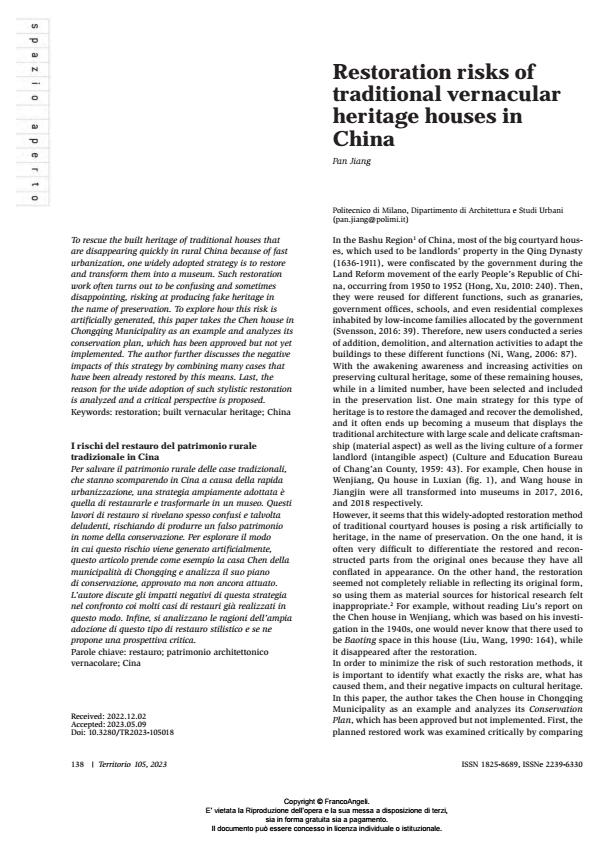Restoration risks of traditional vernacular heritage houses in China
Journal title TERRITORIO
Author/s Pan Jiang
Publishing Year 2024 Issue 2023/105
Language English Pages 14 P. 138-151 File size 773 KB
DOI 10.3280/TR2023-105018
DOI is like a bar code for intellectual property: to have more infomation
click here
Below, you can see the article first page
If you want to buy this article in PDF format, you can do it, following the instructions to buy download credits

FrancoAngeli is member of Publishers International Linking Association, Inc (PILA), a not-for-profit association which run the CrossRef service enabling links to and from online scholarly content.
To rescue the built heritage of traditional houses that are disappearing quickly in rural China because of fast urbanization, one widely adopted strategy is to restore and transform them into a museum. Such restoration work often turns out to be confusing and sometimes disappointing, risking at producing fake heritage in the name of preservation. To explore how this risk is artificially generated, this paper takes the Chen house in Chongqing Municipality as an example and analyzes its conservation plan, which has been approved but not yet implemented. The author further discusses the negative impacts of this strategy by combining many cases that have been already restored by this means. Last, the reason for the wide adoption of such stylistic restoration is analyzed and a critical perspective is proposed.
Keywords: restoration; built vernacular heritage; China
Pan Jiang, Restoration risks of traditional vernacular heritage houses in China in "TERRITORIO" 105/2023, pp 138-151, DOI: 10.3280/TR2023-105018